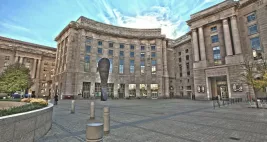Iranian leftists like the Constitutional Revolution’s Social Democrats, in 1905-1909, and proper Marxists like the members of the Iranian Communist Party—one of the earliest in the Middle East, founded in 1920, and enjoying considerable standing in the Comintern—never succeeded to capture the state in modern Iran. But as works like Maziar Behrooz’ Rebels with a Cause: The Failure of the Left in Iran (2000) and Stephanie Cronin’s edited volume Reformers and Revolutionaries in Modern Iran (2004) remind us, Marxism was an influential sociopolitical and ideological force in Iran in the 1920s and especially from the 1940s to the 1980s.
Thus, from its birth as a general leftist party in 1941 via its transformation into a properly Marxist party—memorably analyzed in Ervand Abrahamian’s Iran between Two Revolutions (1982)—to its repression after the CIA-led coup d’Etat of 1953, the Tudeh was the most powerful party of mid-century Iran and the biggest of its kind in the Middle East.
Moreover, from the 1950s to the 1960s Muhammad Reza Shah Pahlavi (1919-1980; r. 1941-1979) and his regime saw the remaining Tudehis and 1960s Maoist splinter groups in Iran and in exile as a threat. It was against this political backdrop, too, that some socioeconomic policies like the 1963 land reform picked up long-standing communist demands, though that reform had other roots, too, and sought to neutralize Iran’s land-holding urban upper class. And in early 1971, it was a new Marxist group, the Sazman-e cherikha-ye fada’i-ye khalq-e Iran,The Organization of the Iranian People’s Fada’i Guerillas (OIPFG), that launched an armed struggle against the shah’s regime, a history told in Peyman Vahabzadeh’s A Guerilla Odyssey: Modernization, Secularism, Democracy, and the Fadai Period of National Liberation in Iran, 1971-1979 (2010). The Fada’i-ye Khalq denounced the Tudeh for sitting on its hands, excoriated the Soviet Union and soon also China for accommodating the shah, and forced competitors like the Islamo-Marxist Mujahedin-e Khalq to spring to action as well. Many fada’iyin died an early violent death.
Even so, several ones wrote influential theoretical texts while in prison, like Bizhan Jazani (1937-1975), or in the underground, like Amir Parviz Puyan (1947-1971) and Mas‘ud Ahmadzadeh (1947-1972). Although hailing from two different groups that had been active before early 1971 and then joined to form the Fada’i-ye Khalq, they had much in common. Thus, they welcomed Cuban, Chinese, and Vietnamese armed revolutionary experiences, but never saw them as simple models to emulate. They had contacts with the leftist Popular Front for the Liberation of Palestine, a story and whose long aftermath is analyzed in Naghmeh Sohrabi’s “Remembering the Palestine Group: Friendship, Global Activism, and the Iranian Revolution” (2019). And partly drawing on Regis Debray and Latin American urban guerilla theorists, they most crucially stressed the need for a self-sacrificing vanguard that attacks the state to shatter workers’ lethargy. (As this did not happen, by 1975 some fada’is split and turned to political agitation; some even joined the Tudeh.)
At the same time, there were disagreements, too. Perhaps key was the nature of the US-Iranian relationship. Ahmadzadeh saw the shah as a US puppet pure and simple, whereas Jazani though he had considerable autonomy while under US control. In this regard, the text produced here hews closely to the Ahmadzadeh line, which was dominant at the time of publication, in 1973. The text is an English translation of a Persian text published in the (obviously prohibited) fada’i publication Nabard-e Khalq; it did not have a byline. The text is of interest in this collection not only because of its systemic reference to US imperialism but also because of its region-wide perspective.
